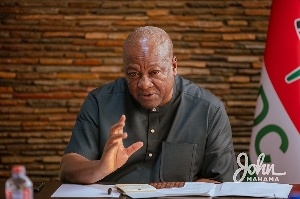Business News of Monday, 5 November 2012
Source: thebftonline
Gov’t targets 50% LPG penetration
Government says it intends to increase the penetration of Liquefied Petroleum Gas (LPG) in the domestic fuel mix to 50% by 2020, from the current level of 18%.
In this regard, various measures are being considered; including having another supply source at the Takoradi habour. Currently, the only major LPG supply source is in Tema.
In an interview with B&FT, Mr. Wisdom Togobo, Director of Renewable Energy at the Ministry of Energy, said the Ghana Cylinder Manufacturing Company (GCMC) will be revamped for the production of more cylinders to be deployed in the countryside.
A rural LPG promotion programme will be launched “very soon,” he said, which will involve the distribution of small-sized cylinders to rural households.
“The cylinders are in place and we are going through the necessary modalities.” A pilot programme will start in the northern parts of the country where the use of woodfuels is still very high, he added.
Government started the LPG promotion programme in 1989, and this helped to increase LPG use in households from 0.8% in 1989 to 18% in 2010, with a corresponding increase in the consumption of LPG from 5,200 metric tonnes to the current level of almost 180,000 metric tonnes per annum.
According to the Energy Commission, LPG has become a major fuel in homes even as access is limited owing to inadequate infrastructure across the whole LPG value chain.
Government reportedly subsidizes LPG by GH?14million monthly in order to encourage people to use the product instead of charcoal and firewood.
“What we have tried to do is to bring the price down and make it affordable. We are aware of the challenges of the subsidy on LPG, particularly with regard to vehicular use. With what we are putting in place, which will come out soon, we want to ensure that vehicles that use LPG will have to pay the other levies that their counterparts using gasoline are paying so that the gas can be made available for cooking, which is the main purpose of the subsidy,” Mr. Togobo noted.
A 2010 survey by the Energy Commission showed that over 80% of households in Accra and Tema used LPG, up from 22% in 2000.
“Consumption has increased about five-fold from 45,000 tonnes in 2000 to 220,000 tonnes in 2009, but this declined to 178,000 tonnes in 2010. The reduction in consumption in 2010 was as a result of frequent shortages in supply.”
Safety tends to be a major concern in the use of LPG. A lot of people are put off by the potentially explosive nature of LPG, especially when the cylinders carrying them are below standard.
Government, Mr. Togobo said, realizes these challenges and is working to deal with the many inferior cylinder regulators in the system.
“We also want to ensure compliance with standards. Vehicles that transport LPG need to stay within the approved standards so that there wouldn’t be leakages that can lead to fire outbreaks.”
With an estimated 300,000 metric tonnes per annum of gas expected from the Jubilee oilfield and prospects in other oil fields, the Energy Commission has proposed an increase in the bulk storage capacity for LPG to about 100,000 tonnes from the current level of less than 10,000 tonnes.
In the meantime, wood fuel remains the dominant source of cooking fuel in the country. Aside from its negative environmental implications, it is considered hazardous to human health when it is not used in a “clean” manner.
According to the Global Alliance for Clean Cookstoves, about 6,500 Ghanaians die annually as a result of exposure to unclean cookstoves.










